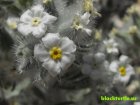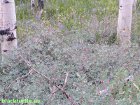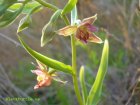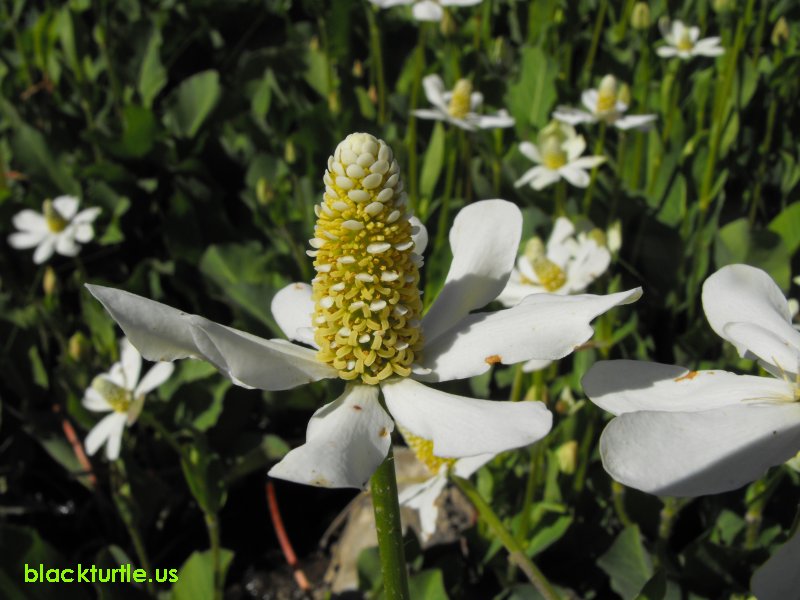
|
Yerba Mansa
January/February
If you travel the dirt road connecting the town of Darwin to Darwin Falls
you will go by Miller's Spring. If you pass by during the right part of the
year you will be treated to the sight of yerba mansa in bloom. These showy
flowers seem out of place in the desert, but they are native to the area.
However, the only place I've ever seen them is at Miller's Spring and they
are entirely dependent a on steady supply of water.
(Click here for more info!)
|
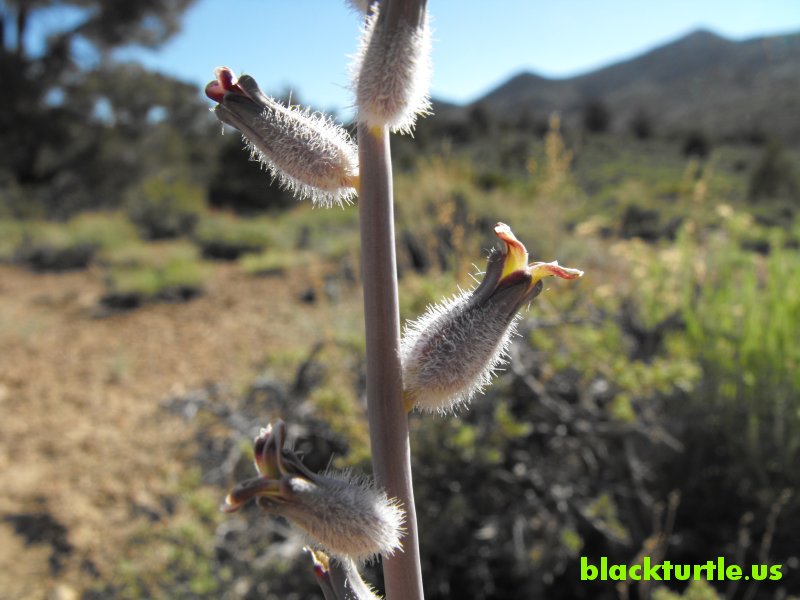
|
Wild Cabbage
March/April
It's the inflated stems and not the flowers of this plant that are most
likely to catch your attention, but the flowers are quite pretty if you take
the time to look at them closely. Interestingly this plant is related to
desert candle and jewelflower. These plants are in the Mustard Family along
with some common desert plants such as spectacle-pod, prince's plume, and
water cress. Also some plants we commonly eat such as broccoli, radishes,
and cabbage are also in this family. You can expect to find wild cabbage
growing in pinyon/juniper forests in the Death Valley area.
(Click here for more info!)
|
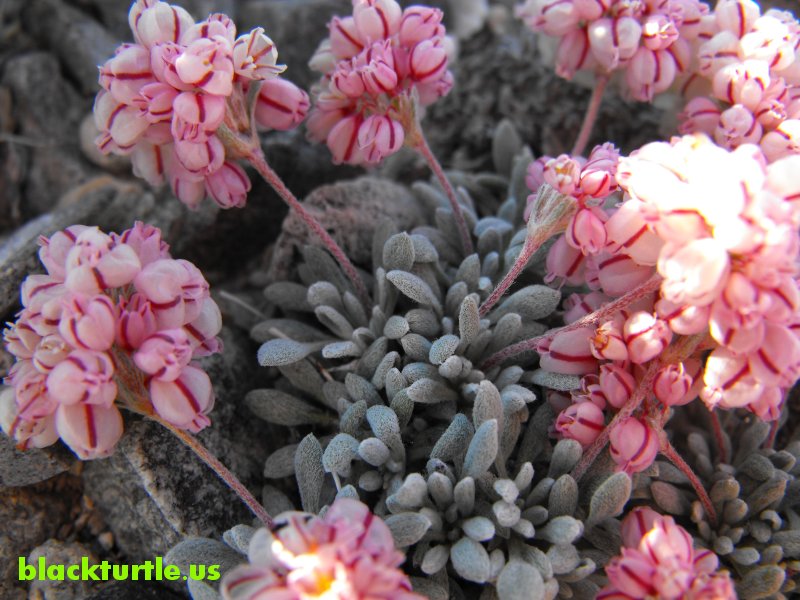
|
Cushion Buckwheat
May/June
While hiking in the White Top Mountain area in Death Valley National Park a
couple weeks ago I noticed a small but interesting plant called Cushion
Buckwheat (Eriogonum ovalifolium). The flowers caught my attention and upon
close inspection I decided that they looked like candy. I'm not sure if I'd
say that they looked more like little peppermint candies or red and white
taffy, but I was almost tempted to pluck a flower cluster and try one out.
It looked that good! I encountered these plants at 7700 feet near what is
left of the Silver Crown Claims at the end of the road above the Huntley
Mine Camp.
(Click here for more info!)
|

|
Chia
July/August
This is a close up view of the lower part of a chia flower. As you can see,
it has three dark blue spots that are arranged in such a manner as to
suggest a pair of eyes and a mouth. Further, it appears as if the eyes and
the mouth are wide open suggesting the facial expression of a scary ghost.
At any rate, chia is a common annual found throughout the Death Valley area
and beyond. It's a member of the Mint Family and you can click here to read
more about it!
(Click here for more info!)
|
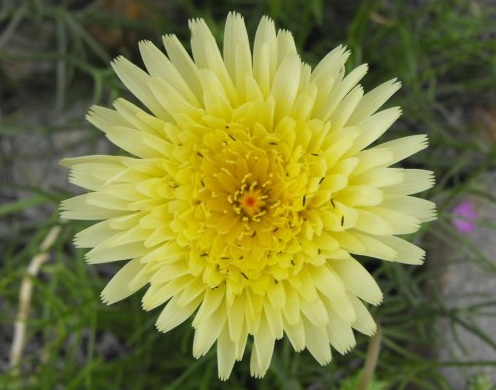
|
Desert Dandelion
September/October
The desert dandelion is so common that it is often considered a weed, but
unlike common dandelion, it is a native to North America. Despite the fact
that common dandelion and desert dandelion share a similar common name, they
aren't as closely related as their common names imply, although they both
are members of the Sunflower Family (Asteraceae). The scientific name for
desert dandelion is Malacothrix glabrata and the scientific name for common
dandelion is Taraxacum officinale.
(Click here for more info!)
|

|
Lilac Sunbonnet
November/December
This annual stays pretty close to the ground, but the flowers will catch
your attention! At only four inches in height you'll have to lean over or
sit down to get a close look at the intricately decorated petals, but they
are worth the effort. Lilac Sunbonnet (Langloisia setosissima) blooms from
late April through June and is generally found below 5500 feet in elevation
throughout the Mojave Desert and surrounding areas.
(Click here for more info!)
|
| 
